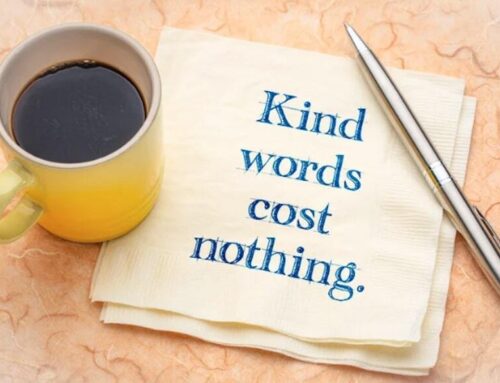
Conflict resolution is the process of bringing disputes to an amicable end, with conflicting parties reaching a mutually satisfying agreement. Disputes are an inevitable part of human nature, making conflict resolution skills a necessity to avoid an escalation of conflict in the workplace and in any other places that warrant human interactions.
Businesses need to ensure that their employees receive training in conflict resolution skills. Notably, every workplace comprises people with different personalities, opinions, and experiences. These people are brought together by the same goal, which is to benefit the business in their unique ways. Their diversity is of great benefit to the business. Everyone’s unique background and approaches are associated with incredible creativity, innovation, and problem-solving.
Still, these differences are the source of endless conflicts in the workplace. Ineffective handling of conflicts can inevitably lead to reduced happiness, low productivity, and the potential for certain conflicts to spin out of control. In this article, we intend to outline the different conflict resolution skills that can improve workplace performance.
The Importance of Conflict Resolution Skills in the Workplace
Why is conflict resolution important in the workplace? Below are several benefits to help you answer that question.
Preventing Escalation
Employees who are fully equipped with conflict resolution skills are better at solving conflicts at the very early stages, which helps prevent escalation. Conflict escalation occurs when conflicts spiral through the five stages, starting first as a problem that needs to be resolved and then becoming an aspect that changes the relational structure of the entire workplace. Conflict resolution skills intentionally trigger different thinking processes that help employees engage differently.
Fostering a Positive Work Environment
Conflict resolution skills among your employees are a precursor to a positive work environment. Given that conflicts are inevitable in the workplace, conflict resolution training equips employees with the right skills to openly discuss their differing viewpoints. Engaging positively builds trust while creating a sense of unity, shared purpose, and mutual respect for everyone at the office.
Enhancing Professional Relationships
Conflict resolution skills can help employees seek solutions to the problem at hand instead of making winning or ‘being right’ a priority. These skills help reduce tension and hurt feelings and increase respect and communication during disagreements, which are precursors to professional relationships in the workplace.
Fostering Teamwork
Conflict resolution skills enhance teamwork in the workplace by helping warring parties put aside their differences and focus on reaching a conclusion that works for everyone. Coming together and shifting the conflict from a cause for division to a cause for unity enhances teamwork among your employees.
Improving Productivity and Reducing Stress
Conflict resolution skills ensure that conflicts are handled effectively, which improves productivity by removing barriers to work progress. These skills also reduce stress at the workplace by encouraging creativity and innovation, making work easier for all employees.

Understanding Common Sources of Conflict in the Workplace
Conflicts in the workplace are usually associated with interpersonal issues. However, larger systemic issues stand at the root of many conflicts. At a glance, what appears like an interpersonal conflict may actually be an issue with the organizational structure.
Here are some of the common sources of conflicts that illustrate these claims.
Differences in Communication Styles
Communication is usually the most common reason for conflicts in the workplace. For example, some employees might be more direct, and others prefer indirect communication, or others might be assertive and others passive. These differences in communication styles create potential blind spots and biases, which trigger conflict situations.
Conflicting Goals and Priorities
Conflicting goals arise in different situations, such as personal relationships and professional settings. Whenever two people have varying values, priorities, or perspectives, there’s bound to be a clash of conflicts. It can be a clash of personal ambitions, conflicting timelines, or divergent work strategies. When each employee insists on using their unique experiences and aspirations, the workplace becomes a complex web of goals that sometimes become impossible to untangle.
Misunderstandings and Lack of Clarity
When two people have different assumptions, there’s bound to be misunderstanding in the workplace. Language barriers and technical languages also cause misunderstanding in the workplace, which is why conflicts arise in such situations.
Confusion and conflicts also arise when teams aren’t clear about what is expected of them, and they occur when there are missing details, unclear goals, or insufficient information.

Key Conflict Resolution Skills
Conflict resolution requires the right skills, especially because it does not come naturally to everyone. Conflict resolution skills are even more important to people who naturally default to unhealthy responses to conflicts, even when they don’t intend to.
Instead of allowing anger and resentment to reign in your workplace, it is time to create an opportunity for them to get professional training on conflict resolution skills.
Below are some of the most important conflict resolution skills that can ensure your employees have positive and productive conversations.
1. Active Listening and Other Positive Communication Techniques
At the heart of many conflict resolution strategies is active listening. You should practice active listening to help you focus on what the other party is saying and then use that message to make your own statements.
Active listening is an essential conflict resolution strategy because it entails genuinely listening to the questions and concerns of the parties, showing them that you care about what they are saying, thereby establishing a sense of respect.
Reflective listening is going into a conflict situation with an open mind so that you can approach the conflict from a perspective that allows the other party to see that you are interested in resolving the conflict.
2. Emotional Intelligence and Empathy
Emotional intelligence and empathy are also considered the cornerstones of effective conflict resolution. Emotional intelligence is the ability to understand and manage one’s emotions while recognizing how those emotions can influence other people’s emotions.
As a conflict resolution strategy, emotional intelligence has four important components:
- Self-regulation
- Social awareness
- Self-awareness
- Relationship management
Empathy, meanwhile, is the ability to imagine yourself in another person’s shoes and feel how they feel. Often, empathy emerges in a situation when another person is going through a hard time and you put yourself in their shoes. However, it does not mean feeling sorry for them. Empathy is a cognitive and emotional skill that will help you connect with other people, understand their perspectives, and respond appropriately.
In the search for a mutually acceptable solution to a dispute or disagreement, all the involved parties require effective skills like emotional intelligence and empathy. These two skills work together to help individuals recognize and regulate their own emotions, understand the emotions of others, and listen attentively and actively.
When individuals express their feelings respectfully, with the goal of understanding the underlying needs and interests of all the parties, they cannot react impulsively or defensively in a conflict situation. They should not make further assumptions or judgments that can create hostility and instead find common ground to resolve conflict.
3. Collaborative Problem-Solving and Negotiation
Collaborative problem-solving and negotiation are critical conflict-resolution techniques. Collaborative problem-solving is the process of working together to find solutions to problems that require varied perspectives, resources, and skills.
It has four major steps:
- Problem identification
- Option generation and evaluation
- Solution implementation and monitoring
- Reflection and learning from the experience.
On the other hand, negotiation is a broad concept that involves interactions and discussions that gravitate toward agreements or decisions among parties with conflicting interests. In the context of conflict resolution, negotiation provides conflicting parties with an opportunity to voice their concerns, find possible solutions, and work together to find a positive outcome.
The synergy between collaborative problem-solving and negotiation is encapsulated in the potential for both skills to promote ideas for innovation while crafting results that serve the interests of all parties involved. Collaborative problem-solving is the tool that separates the person from past conflict while encouraging open dialogue between these two parties. The end game for a collaborative problem-solving approach to conflict resolution lies in creating a solution in which both sides win and existing relationships are protected.
Negotiation is a little hard, but it is a crucial skill when it comes to conflict resolution. By putting their differences aside and working together toward a positive conclusion, negotiation helps conflicting individuals build better relationships in the workplace by showing that each party is willing to let go of their ideals to find a solution that works for everyone.

4. Patience and Self-Control
Among the many conflict resolution skills, patience is among the most critical. This tool involves not only waiting things out but also understanding the needs of all parties involved. These two aspects make patience one of the most effective conflict resolution strategies.
Employees also need patience when things go wrong and in routine negotiations. Sometimes, workplace opportunities are lost when people operate on autopilot. Patience helps people slow down, take a closer look, and see what is really happening.
On the other hand, self-control is the ability to manage emotions and feelings appropriately in a conflict situation. An individual with self-control is rich and possesses real power. In a conflict situation, individuals with self-control will stop, think, and weigh the possible consequences of a negative conflict resolution.
In the midst of being in control of their emotions, these individuals make plans, communicate those plans, and then complete the process by acting on these plans.
Fear, conflict, anger, and the need to take revenge can cause temporary insanity, which is avoidable through self-control. Self-control is crucial in resolving conflict. It is all in one’s ability to stop, gain perspective, opportunity, and objectivity, which also means that these individuals will not make fools of themselves or harm people needlessly.
The biggest question is how one can capitalize on the strengths of patience and self-control. In a nutshell, patience and self-control are your biggest allies in conflict resolution, as both skills will help you understand the crisis and how to manage it using creative solutions.
5. Positive Thinking and Cheerful Attitude
It is hard to bring a conflict to an amicable end unless one is satisfied with the proposed solution. Even if you finally agree with the other parties involved, you can half-heartedly follow through on your end of the bargain. Conflicts are loaded with barriers that you can only overcome by becoming willing to overcome them and achieve a positive outcome.
Positive thinking and a cheerful attitude can be used in different ways as part of conflict management skills. If you enter into every situation with a positive attitude, you will better manage difficult conversations.
Positive thinking and a cheerful attitude will put you in a better position to understand other people’s perspectives. Conflicts occur when one individual wants to have their perspective as the overriding viewpoint to the detriment of other potentially good ideas. If you believe your idea is better than anyone else’s, you are viewing the other person as the opposition or someone wrong.
Positive thinking and a cheerful attitude are some of the ways of addressing conflict as they open you up to understanding the other person’s views, increasing the likelihood that you will have a successful conversation.
In addition, positive thinking makes you more likely to remain open to positive solutions. The primary focus of a positive mind is to reach an amicable resolution to a conflict, and it depends on your openness to positive solutions that can come from others.

6. Willingness to Compromise and Collaborate
It is impossible to separate compromise and collaboration in any conflict resolution effort. Compromise comes in when the need arises to find the best resolution to the conflict, among several other options. Collaboration also comes from the inevitable fact that conflicts involve two parties who must collaborate in some way.
By definition, compromise is the process of finding a middle ground and reaching a settlement when both parties make mutual concessions. It is giving up some of your preferences to accommodate the desires of others.
In conflict resolution, compromise plays a critical role in finding a balance between conflicting interests and steering conversations toward a resolution that is acceptable to all parties involved.
Collaboration is also a critical element in conflict management, and it is responsible for facilitating amicable resolutions to major conflicts. The predominant activities during collaboration include the integration of solutions, marching perspectives, gaining commitments, and learning more about the conflict and the other parties.
Collaboration as a conflict management skill encourages the parties involved to work through their disagreement through active listening, empathy, and the intent to find mutually beneficial solutions. Compromise and collaboration can ensure the consideration of multiple perspectives, which is an essential step in conflict resolution.
7. Body Language and Nonverbal Communication
In conflict management, body language is an essential aspect of communication, and it wields the power to convey more truthful information than the spoken word. Body language conveys a range of intentions, attitudes, and emotions that don’t usually get explicitly expressed through words. There are different ways that people communicate through body language, including facial expressions, gestures, postures, eye contact, and tone of voice.
In conflict resolution, body language is a powerful tool that can help you understand what the other person is telling you without really putting it in words. If you master the skill of positively reading the other person’s body language, you can easily navigate a tense situation and resolve conflict effectively.
Body language is crucial in conflict resolution as it conveys sincerity, mutual respect, and openness. If the other party is wary of your intentions, you can help them relax through your tone of voice, open posture, leaning forward when speaking, and making eye contact.
These body languages signal sincerity, which fosters trust between you and the other party. They send a resounding message to the other party that you are interested in resolving the conflict and are open to their perspectives.
Body language is often considered nonverbal communication, and it entails all messages conveyed emotionally. When a person is upset, as commonly occurs in conflicts, they rarely use words to describe how they feel and their needs at the heart of the problem. Listening to what is felt and what is said can help you connect more deeply to the needs and emotions of others.
In the middle of a conflict, you should pay close attention to the other person’s non-verbal signals, which can help you figure out what they are really saying. A calm tone, an interested or concerned facial expression, or a reassuring touch can go a long way toward relaxing an otherwise tense exchange.

8. Mediation and Facilitation
Mediation and facilitation are two different ways of resolving conflicts. Even though they are sometimes used interchangeably, mediation and facilitation have some key differences.
Mediation is a conflict resolution effort utilized in resolving conflict between two or more parties. On the other hand, facilitation focuses on improving the general functioning of a group. Mediation is also reactive, and it is usually initiated after a conflict has arisen.
In contrast, facilitation is proactive, and it is usually initiated even before the start of a conflict or before the conflict escalates. Comparatively, mediation is a formal and structured approach to conflict resolution, and it has clear goals and outcomes. Facilitation is more informal and flexible, and it has a broader scope and process.
In conflict resolution, mediation and facilitation can be used interchangeably or focused on only one approach. Depending on the nature, context, and stage of the conflict situation, mediation and facilitation can always be chosen.
Mediation is more suitable when you intend to resolve a conflict where the parties are willing to participate. This approach ensures the maintenance and restoration of pre-existing relationships between the parties. Mediation is an effective conflict resolution approach most suited for conflict situations that require some form of confidentiality and impartiality.
Facilitation is a great conflict management approach. It is ideal for a group that needs to work together more harmoniously. It is also suitable in conflict situations that include diverse or conflicting views or interests where the group needs to achieve a common outcome.
9. Critical Thinking and Assertiveness
Critical thinking and assertiveness are two mutually beneficial approaches to effective conflict resolution. Assertiveness helps individuals express themselves confidently as they provide appropriate responses to different situations while maintaining self-control. On the other hand, critical thinking facilitates the analysis of data, reasoning, and evaluation of different perspectives, which are important in making informed decisions.
Assertiveness is a critical tool in resolving conflicts, and it entails more than just being a clear communicator. Assertiveness is a powerful tool that will ensure the development of healthy communication patterns.
Often, assertiveness is having awkward but essential conversations while using the opportunity to ensure clarity between two parties. That clarity is what puts a stop to other parties questioning your intentions and forming incorrect assumptions. Still, assertiveness also helps you by not allowing the opinions of others to shape your thoughts about the other person you are in conflict with. Essentially, assertiveness prevents unnecessary conflicts.
Critical thinking is also critical to conflict management efforts as it helps individuals think clearly and logically without the influence of emotions, biases, and assumptions. Critical thinking involves asking the right questions, collecting and evaluating evidence, and challenging assumptions.
Critical thinking resolves conflicts by avoiding logical fallacies, emotional reactions, and cognitive distortions that usually cloud judgment and cause conflicts.

The Benefits of Investing in Improving Conflict Resolution Skills Through Training
In a dynamic landscape like today’s workplace, conflicts are inevitable, and resolving them has become a critical business undertaking. One sure way of unresolved conflicts being less defined in your workplace is to invest in conflict resolution training for your employees. It is a strategic move that will yield numerous benefits.
Let’s explore some of the top benefits of investing in conflict resolution training in your organization.
Positive Impact on Company Culture and Employee Satisfaction
Conflict resolution training can equip your employees with the skills necessary to prevent conflicts from starting or escalating. Ultimately, your employees’ ability to resolve conflicts while maintaining harmonious relationships will forcefully impact the company culture and employee satisfaction.
Employees who feel that their ideas and opinions are not valued are less likely to look forward to coming to work in the morning. A culture of collaboration and trust is important for a positive company culture and employee satisfaction.
Reduction In Workplace Conflicts and Grievances
Conflict resolution training is proactive management of your workplace. Conflicts and grievances are common in the workplace, and conflict resolution training will help foster a positive work culture by preventing the existence of unresolved conflict.
It includes clear communication and expectations, providing clear feedback, and the creation of an inclusive environment that respects diversity and open dialogue, which ultimately reduces conflicts and grievances.
Higher Emotional Intelligence
Conflict resolution training provides your employees with practical strategies, such as active listening, empathy, effective communication, and self-regulation. It leverages emotional intelligence qualities to enhance leadership effectiveness and provide tools for self-awareness and emotional regulation, which benefits personal relationships as well.
Elevate Your Team’s Performance With Conflict Resolution Training
Conflicts do not have to be scary. They are usually opportunities for growth if they are handled professionally and with the right skills. By addressing conflicts on their own, your employees will become strengthened in their roles in the workplace while knowing how to express their expectations in relation to the expectations of others.
Conflict management skills can help your employees avoid conflict, become effective in preventing conflicts, and ensure that any unavoidable conflicts don’t escalate to unimaginable levels.
At AllWin Conflict Resolution Training, we specialize in equipping organizations with the skills necessary to transform challenges into opportunities for growth and collaboration. Contact us today to explore how our tailored training programs can help your team excel in managing and resolving conflicts.

About the Author: Jeremy Pollack
Jeremy Pollack, Ph.D. is the founder of Defuse De-Escalation Training, a sister company of Pollack Peacebuilding Systems, the largest workplace conflict resolution training and consulting firm in North America. He actively participates in de-escalation training and consulting initiatives for a variety of industries, from Fortune 500 companies to well-known non-profits. Besides his Ph.D. in Psychology from Grand Canyon University, Jeremy holds a Master’s Degree in Negotiation, Conflict Resolution, and Peacebuilding (NCRP) from California State University, Dominguez Hills. He is also a member of several organizations focused on conflict resolution and peacebuilding, such as the Peaceful Leadership Institute, the Association for Conflict Resolution, and the Division 48 (Division of Peace Psychology) of the American Psychological Association. Jeremy also holds several certifications in the field of training and coaching: he is a Certified Organizational Development Coach (CODC™), a Certified Clinical Trauma Specialist-Individual (CCTS-I™), and an Associate Certified Coach (ACC) under the International Coaching Federation.



